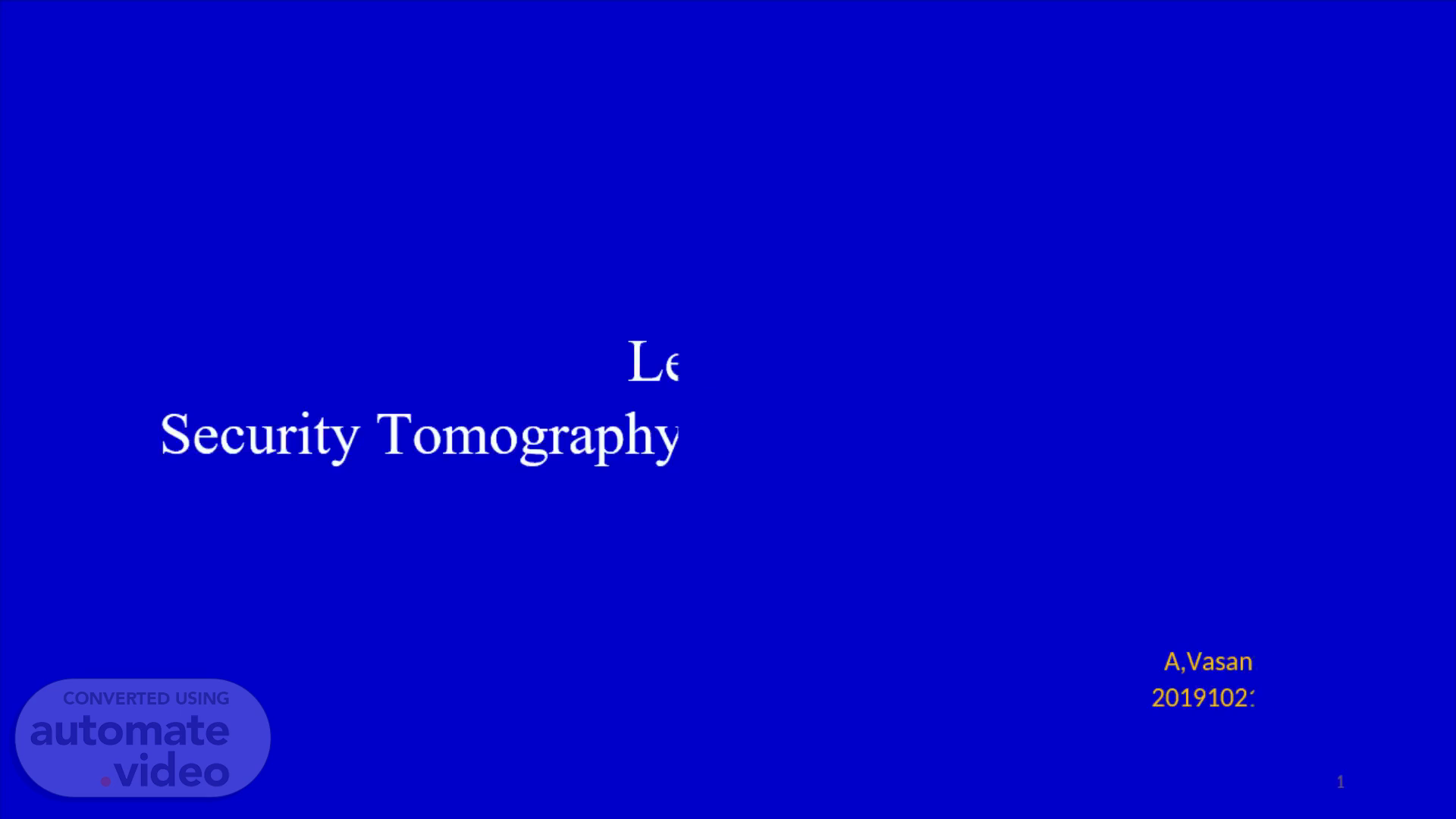
Page 1 (0s)
Lesson 5 Security Tomography and Layer Attack Models.
Page 2 (7s)
Computational Tomography. 2. A computing method of producing a three-dimensional picture of the internal structures of an object Observation and recording of the differences in effects on passage of energy waves impinging on those structures.
Page 3 (20s)
Computational Security Tomography. 3. Identifying the network vulnerabilities Used in computational security in complex set of networks Needed for the design of efficient attack strategies.
Page 4 (30s)
Security Tomography. Chapter-10 L05: "Internet of Things " , Raj Kamal, Publs.: McGraw-Hill Education.
Page 5 (44s)
Network Tomography. 5. Refers to study of vulnerabilities and security aspects for network monitoring in a complex system WSNs RFIDs networks IoT networks Allocating resources and ensuring the network reliability and security.
Page 6 (56s)
Layered attacker model. Chapter-10 L05: "Internet of Things " , Raj Kamal, Publs.: McGraw-Hill Education.
Page 7 (1m 7s)
Fig. 10.4 Layered Attacker Model and possible attacks in IoT/M2M.
Page 8 (1m 39s)
Layer 1 Attacks Solution. 8. Depends on the devices used For example, link level provisioning of security Uses—BT LE link level AES-CCM 128 authenticated encryption algorithm for confidentiality and authentication, and ZigBee at link level security using AES-CCM-128..
Page 9 (1m 53s)
Layer 2 Attacks Solution. 9. Programming the network switches to prevent internal node attacks during use of DHCP or Spanning Tree Protocol (STP) Additional controls: ARP inspection, Disabling unused ports and Enforcing effective security on VLAN’s (Virtual LAN) to prevent VLAN hopping..
Page 10 (2m 7s)
Layer 2 Attacks Solution. 10. Provisions for MAS for security, root key data store, and devices and data authentication in LWM2M OMA specification for device gateway to Internet.
Page 11 (2m 18s)
Layer 3 Attacks Solution. 11. Use of temper resistant router Use of packet filtering A firewall for controlling routing messages and packets data between layers 3 and 4 for reducing the risks..
Page 12 (2m 29s)
Layer 4 Attacks Solution. 12. Port scanning method to Identify the vulnerable port Effective firewall configuring and opening of network ports and locking down ports only to those required.
Page 13 (2m 40s)
Layer 4 Attacks Solution. 13. DTLS between layers 5 and 4 The DTLS three types of security services: integrity, authentication and confidentiality. Inclusion of SASL (Simple Authentication and Security Layer) for security when using the XMPP protocol..
Page 14 (2m 52s)
Layer 5 and 6 Attacks Solution. 14. Results of poor coding practices of Application programmer Use HTTPS communication link for Web applications/services can use..
Page 15 (3m 3s)
HT T PS. 15. Content privacy domain header: Allows use of digital signatures and encryption, various encryption options Server-client negotiations Cryptographic scheme is a Property assigned for the link Specific algorithm is the Value assigned Direction specification done: One-way or two-way security.
Page 16 (3m 17s)
CISO Suggested Layered Framework Solutions. 16. Layers 1–6: Role-based security Layers 1–4 Anti-temper and detection-based security Layers 1–6: Data protection and confidentiality Layers 1–6: IP protection.
Page 17 (3m 29s)
Summary. 17. We learnt Network tomography help in observing each network sections and subsections Security tomography finding the attack vulnerable sections/subsections on observations for behaviours using a finite number of objects or threats in a complex set of subsystems.
Page 18 (3m 42s)
Summary. 18. We learnt Layers 1 to 6 attacks HTTPS CISCO security solutions framework.
Page 19 (3m 50s)
End of Lesson 5 on Security Tomography and Layer Attack Models.